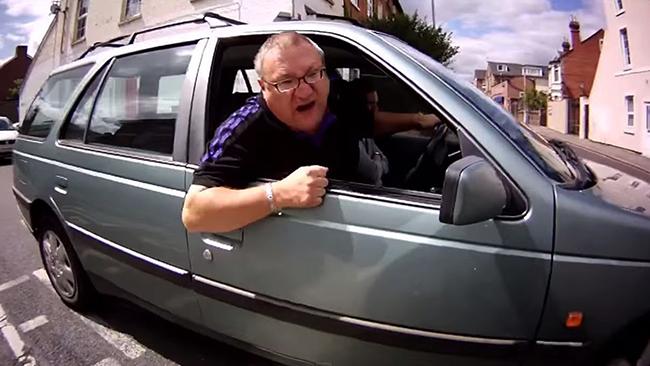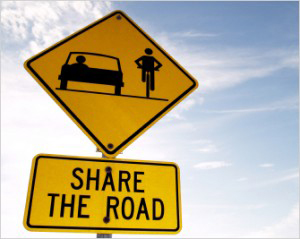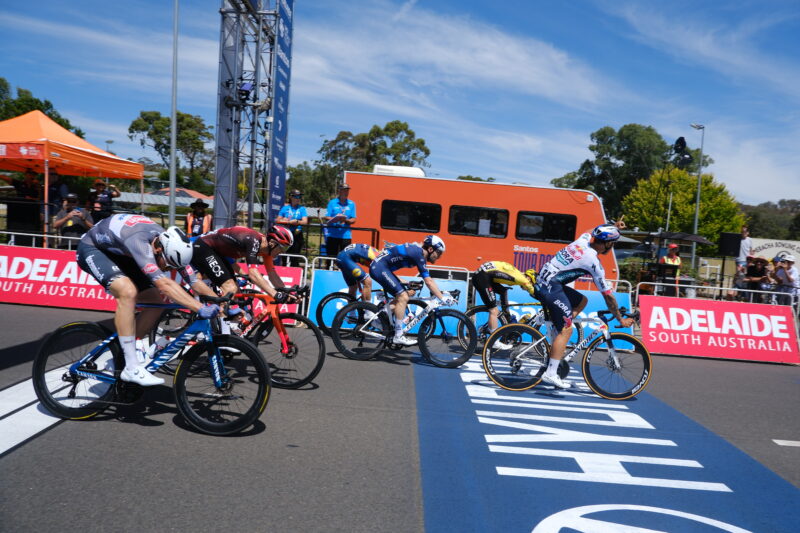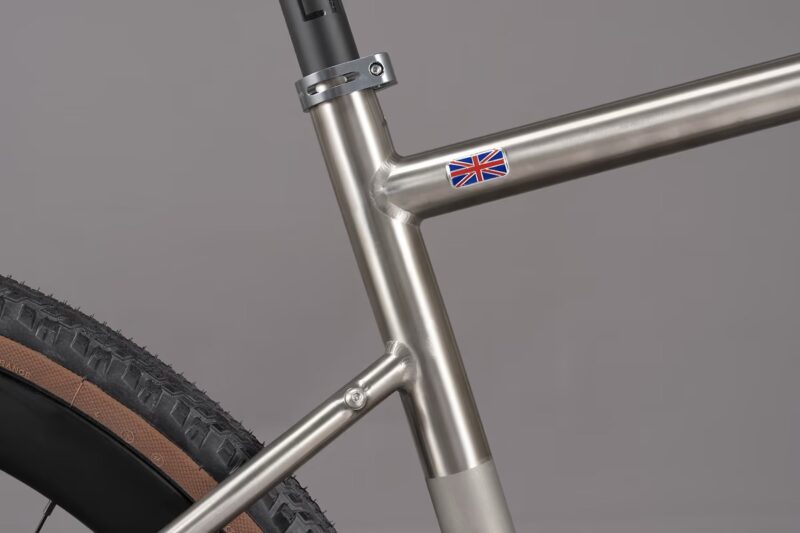How to deal with road rage

Aggressive driving behaviour puts all road users at risk. Anthea Hargreaves looks at the causes of road rage, and best approaches to deal with it.
The toot of a horn, an aggressive swerve, a deliberate too-close pass or abusive obscenity yelled from a window – for too many riders, road rage is seen as an unavoidable component of sharing Australia’s roads.
It can be a frightening and intimidating experience being harassed on a bike – you feel vulnerable and exposed, unprotected by the safe confines of a car with lockable doors.
In some of the most harrowing examples of road rage, the behaviour can be considered as nothing less than assault, which is a criminal offence. In January this year, riders on Melbourne’s Beach Road were terrorised by two men who hurled full bottles of soft drink at them. In June, a bike rider in Perth was threatened by a knife-wielding man and in August, a Sydney truck driver was charged by police after he filmed himself deliberately splashing a bunch of cyclists on Sydney’s M5 Motorway.
While these are rare and extreme examples of what can happen when tempers flare, it is concerning that these mindless acts of harassment and assault are becoming an all too common experience as bikes, cars, trucks and buses fight for space on congested roads.
In a Bicycle Network survey of 300 bike riders, 95% of respondents said that they had witnessed road rage at least once, with more than a third experiencing it for themselves at least once a month.
In many cases, the confrontation arose out of frustration due to inadequate infrastructure or congestion, a misunderstanding of the rights of bike riders or actions that compromised the safety or property of another road user.
“Some of the rage seems to be particularly bad during times when motorists are stuck in traffic and frustrated. They seem to be annoyed with cyclists not being held up in traffic, or taking up ‘their’ space on the road,” regular rider Rolf Bjerkhamn told Bicycle Network.
Melbourne rider David Greenwood believes that a lack of awareness around bicycle infrastructure and laws plays a big role in increasing tensions on the road.
“There is a lack of understanding of many vehicle drivers around the rights and needs of riders, and also appropriate use of infrastructure – including bicycle boxes or kerbside bike lanes,” Mr Greenwood said.
 Even Tour de France winner Cadel Evans, who spent his career riding in Europe and Australia, has previously called out Australians as among the worst drivers in the world when it comes to bike riders, telling News Limited, “Our roads have much less traffic, are far larger, and the drivers have much more space, but they are much more aggressive and negative to other road users.”
Even Tour de France winner Cadel Evans, who spent his career riding in Europe and Australia, has previously called out Australians as among the worst drivers in the world when it comes to bike riders, telling News Limited, “Our roads have much less traffic, are far larger, and the drivers have much more space, but they are much more aggressive and negative to other road users.”
In a 2015 University of Sydney study of daily driver frustrations, the actions of other drivers (such as tailgating and cutting-off) were the most common causes of annoyance on the roads, while cyclists riding two abreast was found to be the fifth-most-annoying road behaviour. Perhaps surprisingly, given the ‘us-versus-them’ media coverage of bike riding in Australia, behaviours such as riding through red lights and lane filtering to the front were not strongly represented in the results.
An interesting VicRoads study in 2012 found that the cause of driver frustration was often not bike riders—drivers were frustrated for all sorts of reasons but took out their frustration out on riders because they were a convenient target.
For years, our communities have been built around the movement of cars. Motorists are the dominant road user group and while 3.6 million people in Australia ride bikes every week, they still constitute a minority.
As a result, people who ride bikes are positioned as ‘the other,’ and are subjected to an outgroup bias. As the ‘other’ road user group, bike riders are subject to ‘error group attribution’, where the perception of wrongdoing by one is projected onto all. However, this bias goes both ways. In seeing drivers as ‘aggressive, dangerous and impatient’, we create transgressive stereotypes that can impact our reactions and quickly lead to escalation from both sides.
We all have a right to use the road, and while confrontation between motorist and rider can leave you feeling powerless, there are some things that you can do to handle the situation from the bike.
Bicycle Network’s General Manager of Government and External Relations, Tess Allaway, believes that regardless of your mode of transport, you should never aggravate the situation.
“When faced with a threatening situation, it’s all about de-escalation and self-preservation – resist the urge to retaliate, stay calm and keep your distance,” Ms Allaway said.
“Empower yourself by knowing the road rules along with your rights as a legitimate road user. If you are the victim of, or witness any dangerous or violent road behaviour, take down the registration number, colour and model of the vehicle, and always report it to the police.”
No matter who you are or how you ride, road rage doesn’t discriminate. But if there’s one widely-relevant rule of thumb for bike riders and motorists alike, perhaps we should look to this piece of advice, from The Weekly’s Charlie Pickering: “more people would ride, and the roads would be less congested, if everyone, cars and bikes, just stopped being a wanker.”
Bicycle Network recommends the following actions when confronted with road user aggression:
- Stay calm – If someone is actively showing you aggression while behind the wheel of a vehicle, try to keep your emotions in check. Be mindful of your tone and body language. Understand that your actions and words in the moments following the road rage incident can play a big role in diffusing the situation.
- Don’t retaliate – As tempting as it may be, refrain from shouting back abuse or getting into an argument. Never deliberately touch the other person or their property and if you’ve made a mistake, be the bigger person and apologise. In the past, bike riders have been charged with criminal damage for striking vehicles with their fists as their rode past.
- Remove yourself from the situation – If the harassment is persistent, do everything you can to remove yourself from the situation. Take a different route, keep your distance or get off your bike.
- Report the incident – know your rights, and if you witness dangerous behaviour, always report it to the police. Record the registration of the vehicle, time and place of the incident and the details of any witnesses. If the person is driving a taxi or company car, report the incident directly to the company or taxi company.
Did you know that road users in some states can be charged with road rage related offences?
In New South Wales, road users can be charged with predatory driving under section 51A of Crimes Act. It’s an offence which includes conduct that causes or threatens and impact with the other vehicle and intends to cause the person in the other vehicle actual bodily harm. It carries a maximum penalty of a $100,000 fine and/or five years’ imprisonment.
Menacing driving with intent also applies in NSW and the ACT and carries a maximum penalty of 18 months’ jail time for a first offence in NSW and 12 months in the ACT. There is currently no menacing driving law in other Australian states.
In Victoria, under section 21 of the Crimes Act, a threat to inflict serious injury, intending that that other person would fear the threat would be carried out, can result in up to five years imprisonment.
Bicycle Network CEO, Craig Richards, said that new laws should be strongly considered in other states if they stopped incidents that may deter bike riding from occurring.
“Road rage incidents deter people from getting on their bikes and enjoying the freedom and health benefits that come with riding,” said Mr Richards.
“If we can introduce laws across Australia that better acknowledge riders’ rights we will see more people on bikes, reduced congestion and a healthier country.”
“While motorists who disrespect bike riders are in the minority, we need to ensure that poor road behaviour is not deemed acceptable and does not spread.”
Ride On content is editorially independent, but is supported financially by members of Bicycle Network. If you enjoy our articles and want to support the future publication of high-quality content, please consider helping out by becoming a member.








I am a rider myself.
I get frustrated with riders riding on roads that are not safe for them to be on simultaneously with cars. I don’t care what our RIGHTS are. If it’s not suitable, it’s not suitable.